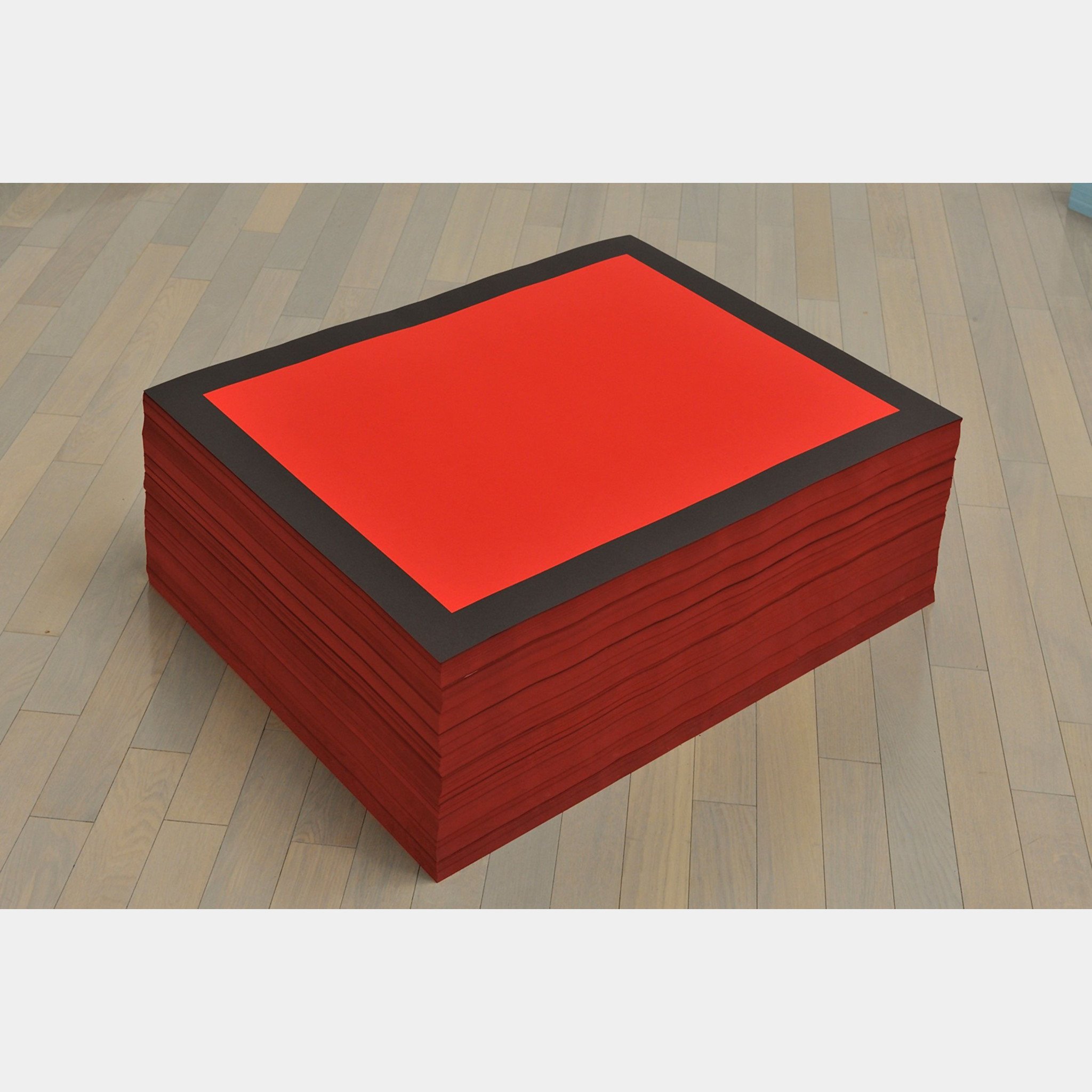
During a second year Art History class I was introduced to the piece ‘Portrait of Ross’ by artist Felix Gonzales-Torres; portraying his deceased lover who tragically passed away from AIDs. The work involved a large pile of candy being placed in a corner as audience members were allowed to, at their own will, pick and take candy from the pile. The pile slowly disappeared over time; mirroring the deterioration of Ross and maybe even how we as a society robbed people suffering from this crisis of life.
This piece NRA, unlimited copies; which was displayed at the minimalism exhibition follows the same process of having audience members take home parts of the work with some key differences. Firstly unlike ‘Portrait of Ross’ ‘NRA’ is unlimited. The artwork never goes away and can be taken from indefinitely. Additionally, ‘NRA’ is composed of large red posters with black borders.
Felix in my observation; was probably making a negative political statement about the NRA. Being an American artist himself the NRA would be a relevant political topic for his work and one he could attribute a lot of death towards. This is what I think he was trying to do with this piece; each paper representing a life lost by the NRA and being unlimited showing how the problem has yet to end.
I do not know if this is the true meaning of the piece but it is what I took from it and it felt very powerful to interpret that message

